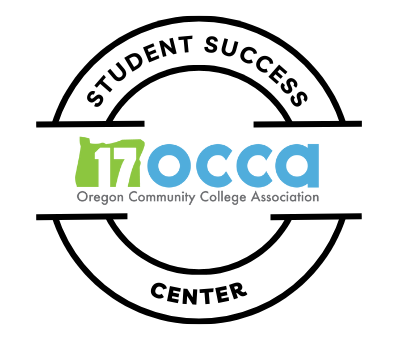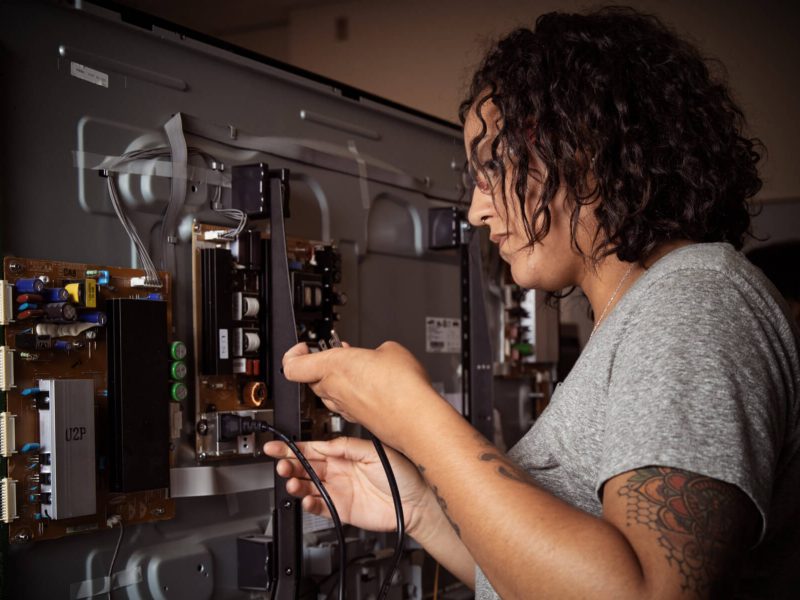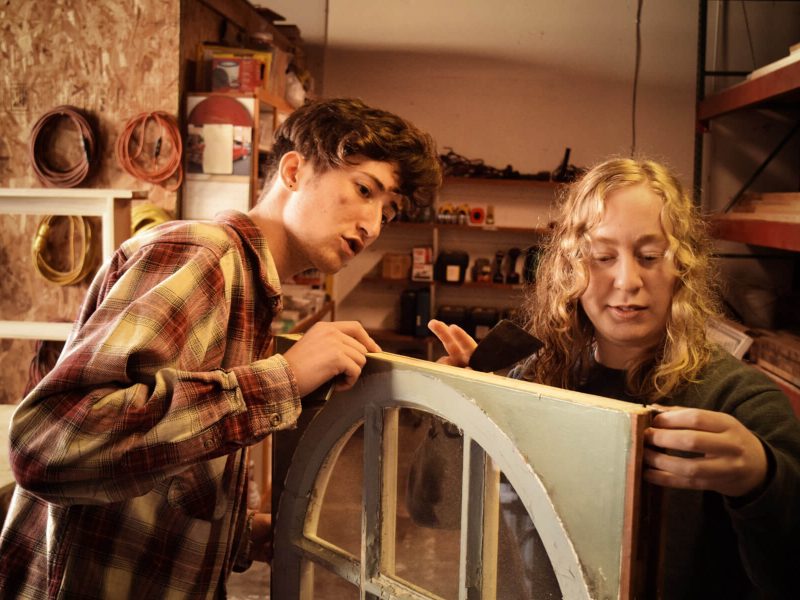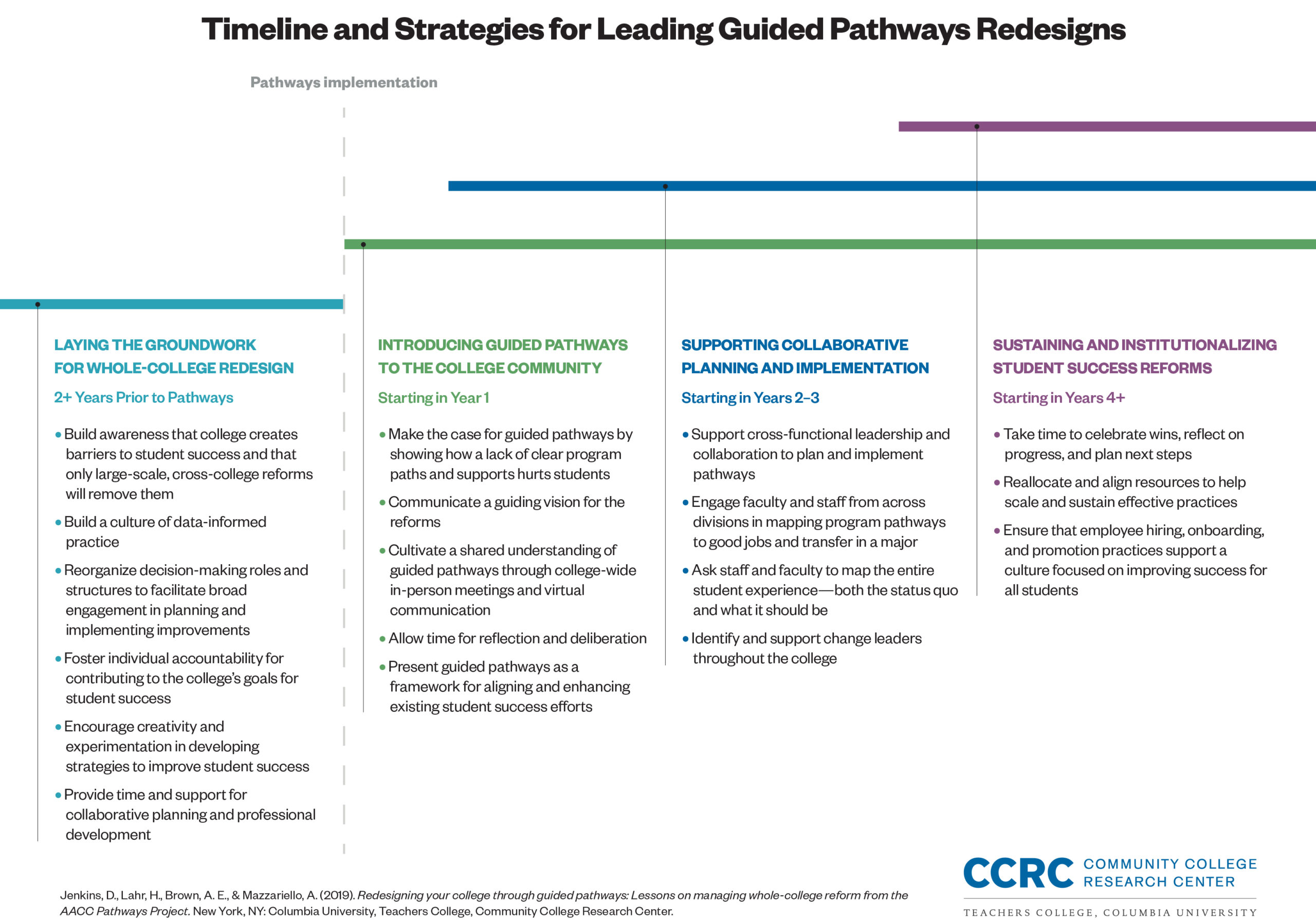
The Oregon Guided Pathways Project is intended to support our state’s community colleges in the design and implementation of structured academic and career pathways at scale, for all students. Building on national research from the Community College Research Center (CCRC) and the American Association of Community Colleges (AACC), this project is meant to help increase completion rates and student achievement across Oregon.
What is the Guided Pathways model?
The Pathways Model is an integrated, institution-wide approach to student success based on intentionally designed, clear, coherent and structured educational experiences, informed by available evidence, that guide each student effectively and efficiently from her/his point of entry through to attainment of high-quality postsecondary credentials and careers with value in the labor market.
Central to the pathways model are clear, educationally coherent program maps which include specific course sequences, progress milestones, and program learning outcomes—that are aligned to what will be expected of students upon program completion in the workforce and in education at the next level in a given field. Students are helped from the start to explore academic and career options, choose a program of study, and develop a plan based on the program maps. These plans simplify student decision-making, and they enable colleges to provide predictable schedules, frequent feedback, and targeted support as needed to help students stay on track and complete their programs more efficiently. They also facilitate efforts by faculty to ensure that students are building the skills across their programs that they will need to succeed in employment and further education.
The Four Dimensions of the Guided Pathways Model
#1. Clarify paths to student end goals.
- Simplify students’ choices with default program maps developed by faculty and advisors that show students a clear pathway to completion, further education and employment in fields of importance to the region.
- Establish transfer pathways through alignment of pathway courses and expected learning outcomes with transfer institutions, to optimize applicability of community college credits to university majors.
#2. Help students choose and enter a pathway.
- Bridge K12 to higher education by assuring early remediation in the final year of high school through the application of courseware technology in strong K12/higher ed partnerships, such as the TN SAILS model.
- Redesign traditional remediation as an “on ramp” to a program of study, which helps students explore academic and career options from the beginning of their college experience, aligns math and other foundation skills coursework with a student’s program of study, and integrates and contextualizes instruction to build academic and nonacademic foundation skills throughout the college-level curriculum, particularly in program “gateway” courses.
- Provide accelerated remediation to help very poorly prepared students succeed in college-level courses as soon as possible.
#3. Help students stay on path.
- Support students through a strong advising process, embedded and ongoing in the pathway experience and supported by appropriate technology, to help students make informed choices, strengthen clarity about transfer and career opportunities at the end of their chosen college path, ensure they develop an academic plan with predictable schedules, monitor their progress, and intervene when they go off track.
- Embed academic and non-academic supports throughout students’ programs to promote student learning and persistence.
#4. Ensure that students are learning.
- Establish program-level learning outcomes aligned with the requirements for success in employment and further education in a given field and apply the results of learning outcomes assessment to improve the effectiveness of instruction across programs.
- Integrate group projects, internships, and other applied learning experiences to enhance instruction and student success in courses across programs of study.
- Ensure incorporation of effective teaching practice throughout the pathways.




Past Webinar Resources
Supporting Faculty in Designing Applied Learning Experiences
Personalizing the Onboarding Experience – February 4, 2022
Building the Fourth Pillar for Improved Teaching in Guided Pathways: How Lesson Study Can Help – December 3, 2021
- Recording Link
- Presentation PowerPoint
- The Implementation & Outcomes of Lesson Study in Community College Mathematics
- Lesson Study: Getting Started
Onboarding & ACIP Framework Webinar – November 19, 2021
- Recording Link
- Presentation PowerPoint
- Blog: Ask-Connect-Inspire-Plan: How to Reimagine Onboarding into a Program of Study
- Professional Development Opportunity: Guided Pathways Summer Institute
- Workshop curriculum to lead yourself: CCRC “lead it yourself” workshop curriculum
Guided Pathways Webinar – October 22, 2021
Guided Pathways Webinar – September 17, 2021
Upcoming Webinars
Education First Student Success Centers Webinars
2022-2023 Lunch & Learn Series – click here to learn more and/or register!
Participating Colleges
Cohort A: (2018-19)
Cohort B: (2019-2020)
Cohort C: (2020-2021)

